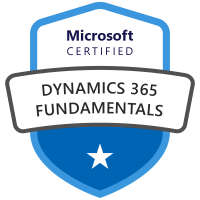Intro
If your organization uses Microsoft Teams, you know it’s a great place for individual and group chats, much like any other instant messaging service. Outside of Chats are Teams, which are where people come together to get big things done. If you have a project or program, creating a Team (in Teams) can be the focal point or wheel hub that helps align all team members, keeping them on track to complete the project on time or maintain a program. Let’s get into how a Group Chat and a Team are different and what capabilities a Team has to offer to effectively manage projects and programs.
Project and Program Management
Projects tend to be smaller in scope and team size and are typically shorter in term than programs but in some cases can still last multiple years. Programs tend to be more encompassing in scope and involve more people than projects. Programs can include many different projects simultaneously and continue into perpetuity. But both require coordination, direction, structure, documentation, and organization. Below is an example of a high-level process flow of a project and a Program Management Framework.
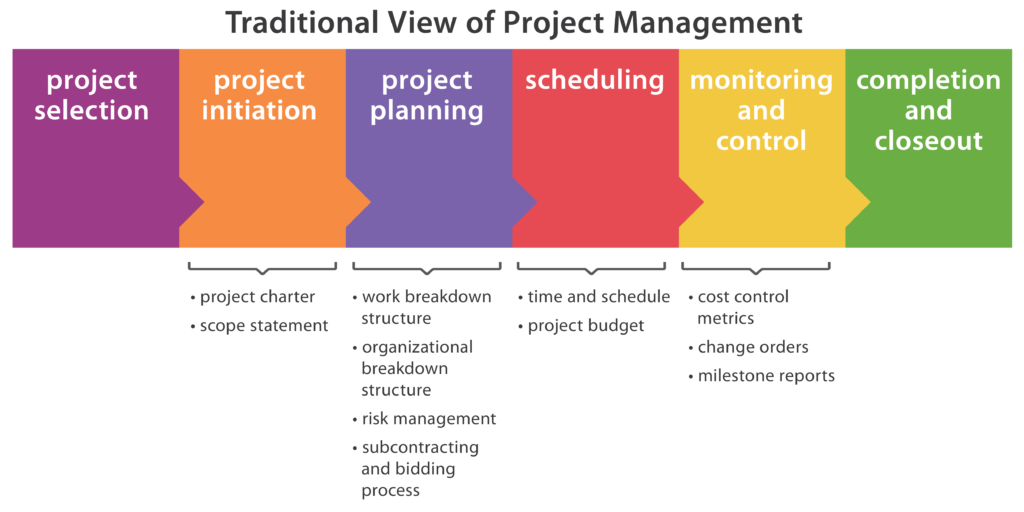
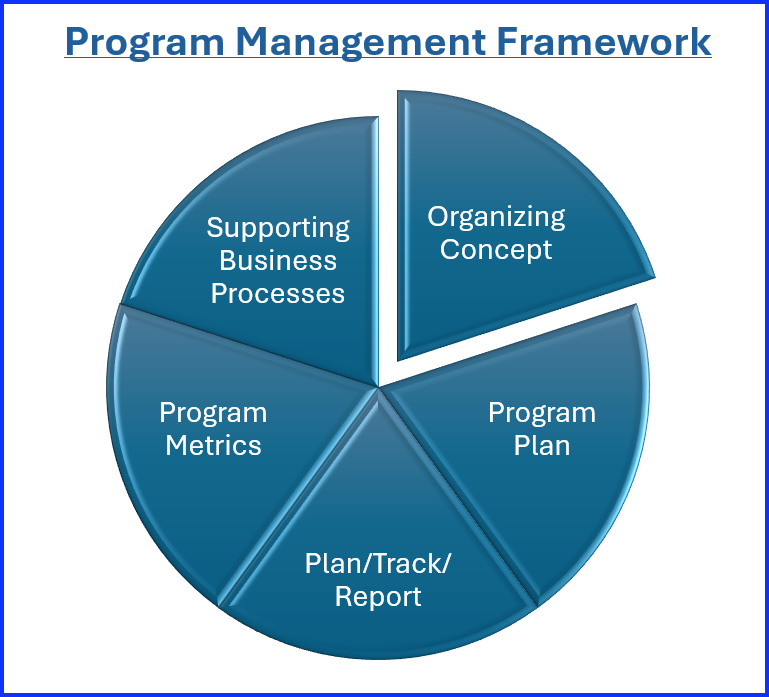
Group Chats
Group chats are created within the Chats section of Teams by adding additional people to a chat and are typically for the purpose of small groups to come together on a specific topic or task that is short-term in nature. They can be created easily, ended easily and do well at serving this requirement. Group Chats allow the ability to add apps alongside it, give the chat a name, and pin the chat to your favorites, but do not allow for file management or many other capabilities that are supported in a Team.
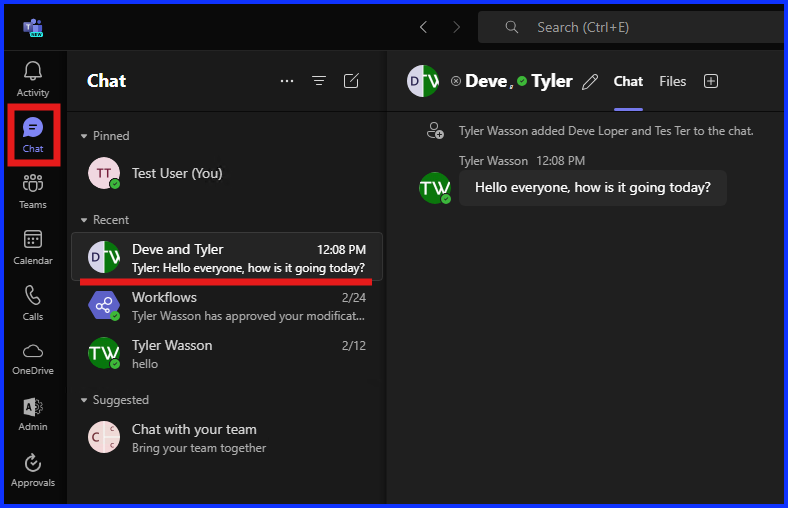
A Team (From Within Microsoft Teams)
A Team is a collection of people, content, and tools created to collaborate on different topics and structures within an organization. Teams can be private, with membership by invitation only, or public, allowing any member of the organization to join. Teams are structured to facilitate close working relationships to achieve tasks and goals.
Benefits of Creating a Team:
- Provides visibility to all stakeholders who can accessing project related materials.
- Allows focus on all project related matters and materials to a centralized location
- Allows all stakeholders to be part of the team but can organize team members into channels around specific topics.
There is more control within a Team to manage members, notifications, files, and content versus Chats which do not. Much of this control comes from being able to segregate information within Channels.
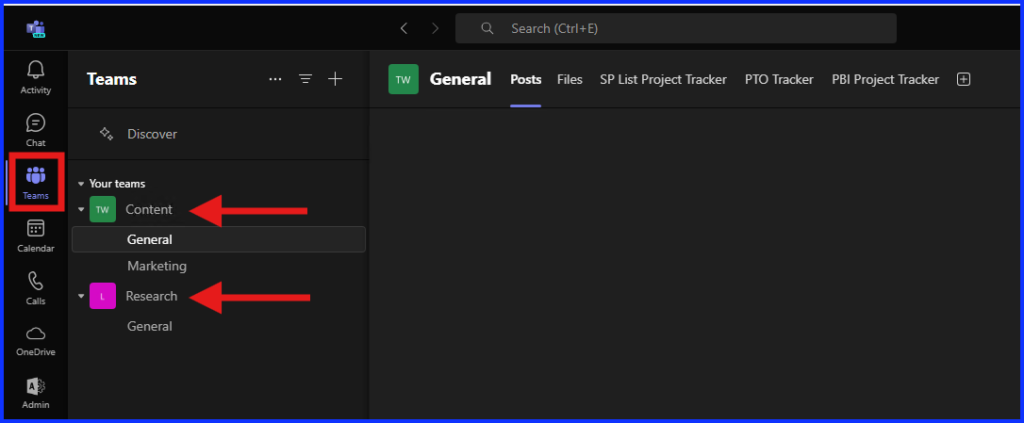
Channels
Within a Team are Channels, they serve as dedicated workspaces for people to coalesce around a specific topic, making collaboration more organized and focused. Think of channels as sub-teams within the main team.

Benefits of Channels:
- Channels come in three flavors, Standard (open to all members within the Team), Private (open to only selected Team members) or Shared (open to people inside and outside your organization).
- Conversations are organized into Posts.
- A SharePoint site is generated for each channel created.
- Notifications can be managed at the Channel level, so you only receive notification for the channels you want. Click here and scroll down to number 6 for more details on channel specific settings.
- Each Channels comes with three tabs Posts, Files, and Notes but many more can be added.
On a side note, all Teams come with a default channel called “General” which cannot be renamed, or at least until now:

Posts in Channels
Channel Posts are similar to Chats but offer more functionality and are designed for a more structured conversation. This is done by providing the option to add a subject line to the post and replies are attached and grouped to the post. Posts can open in a separate window providing the ability to manage multiple conversations in separate windows allowing the conversations to focus on separate topics.
To see more details on the new Posts experience in Teams click here.
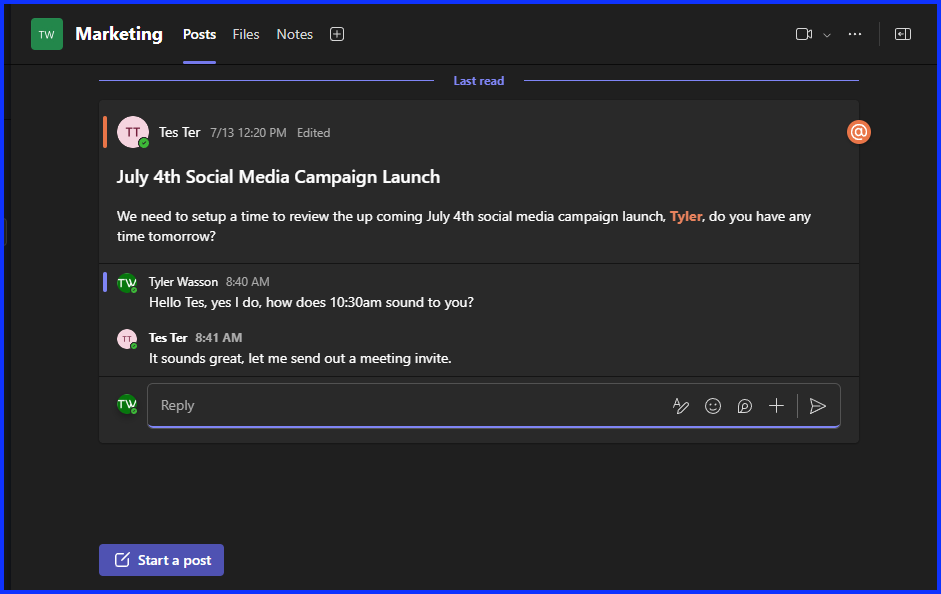
SharePoint in Teams
A Microsoft Team is built on the SharePoint infrastructure and when creating a new Team, a parent SharePoint site is generated. For each Channel created, a child SharePoint site is created. As when a SharePoint site is created, there are several components created and connected with the Team/Channel to include a SharePoint home page, Document Library and a OneNote notebook. Additional site pages, document libraries and notebooks can be created along with other SharePoint components to include Lists and workflows.
File Management (Document Libraries)
Team Chats does not offer any type of file management, yes you can share files but if adding hundreds of files over years will make it extremely difficult to find and reference over time. A SharePoint Document Library is created for each channel and provides the same capabilities of standard SharePoint Document Library such as adding additional columns to your files as shown below.
Click here to see more formatting options for document libraries.
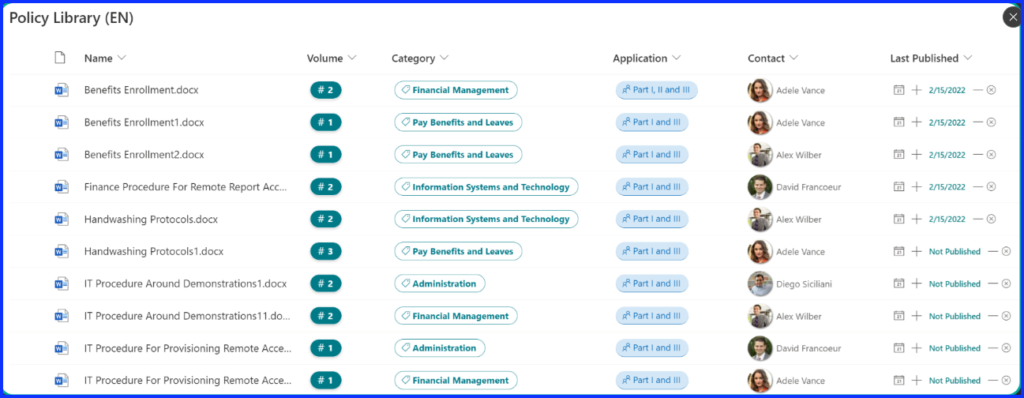
Teams and Channel Tabs/App Integrations/Workflows
Since a Channel is built on SharePoint, there are more opportunities for application integrations and workflows with Chats.
Send Emails to a Channel
One key difference is the ability to send emails to a Channel as each Channel has its own email address and the ability to manage who can send emails to it, to include external users. Below is an example of an email send to a channel.
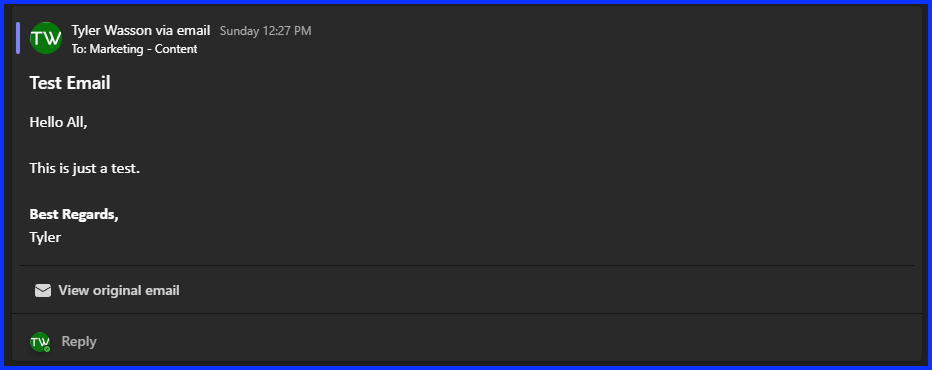
OneNote
When creating a new Team, just like in SharePoint, a OneNote notebook is created and for each channel created will automatically have a link to the Notebook as one of its tabs. OneNote is excellent for creating Standard Operating Procedures (SOP’s), training documentation, and taking meeting notes.
Microsoft Planner/Project
Planner is a great tool for managing the Team’s plans and you can easily create a plan for a Team and add it to a channel. Tasks can be organized in a grid or board view and progress can be tracked with built in charts. Planner is included in all enterprise M365 plans. Microsoft Project on the other hand requires a separate subscription but offers more robust capabilities that can handle the most complex projects or portfolios. Both are integrated into the new Teams Planner application.
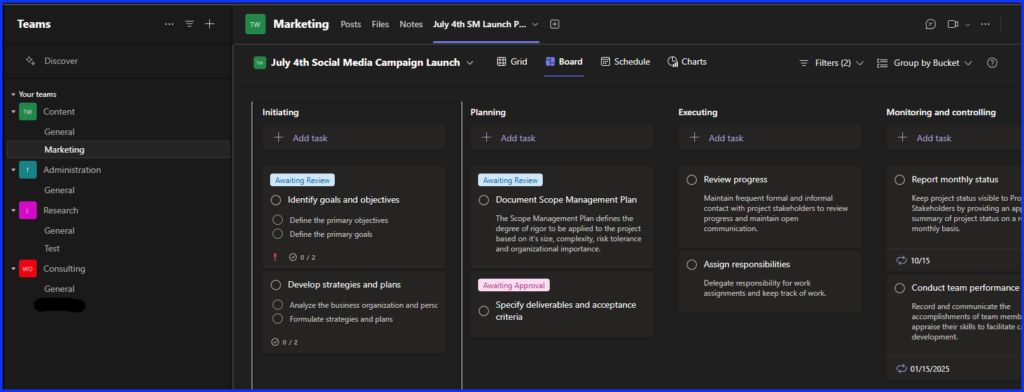
100’s of Applications Integrate with Channels
Although Microsoft’s first-party applications integrate very well with Team Channels, there are literally thousands of non-Microsoft applications that also integrate within your Channel. Top applications like Trello, Asana, Jira, Canva, Adobe, Workday, Box and many, many others. Some can be added directly into the Teams app and some directly into a Channel. Just look for the Apps button on the left side bar or the plus button in the Channel menu. You can also link any website to your Channel. By integrating the apps or websites your team uses to manage their project or program reenforces the idea of focusing everything you need into one place.
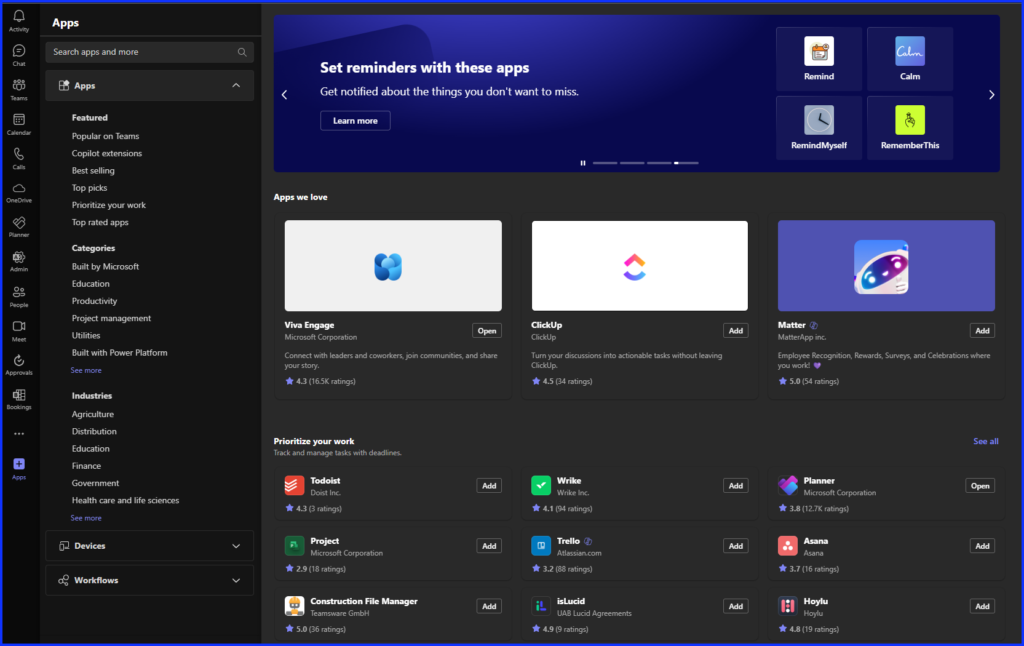
Archive and Restore a Channel
Teams has the ability to archive a Channel that is either no longer or temporarily not in use. The files and conversations are not deleted, the Channel is hidden and can be restored. The information in the Channel becomes read-only and is still searchable. Click here to see how to archive or restore a Channel.
Workflows
Although you can run workflows in Chats, Channels offer many more options when it comes to workflows. There are hundreds of templates to choose from. The below image gives you a sampling of the Channel options. Click here to get started setting up Channel workflows.
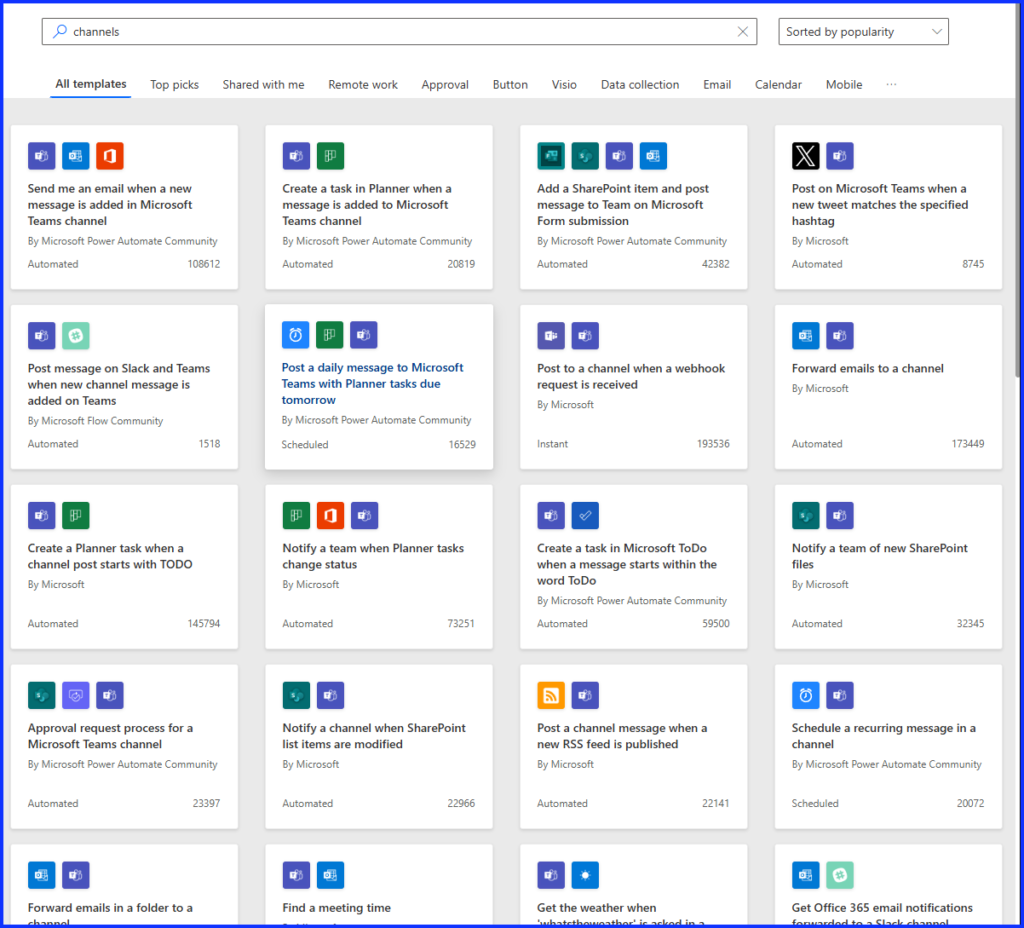
How This All Works to Manage Your Project or Program
Team Channels provide a destination where everyone can come together to manage a project or program. It’s where leadership can come to easily get status updates and where the worker bees can come to update related project or program information. This extremely beneficial to large companies that work cross-functionally, as it helps to reduce the noise and clutter across all forms of communications and file storage that can work to distract the team.
By organizing channels around key topics, you are able to segregate your plans, tasks, lists, files, sites, notes around those topics providing team members an enhanced level of focus. They can do this by pinning their key files, sites, and applications to the Channel.
Regardless of team members changing hands, leaving the company and new members joining, there is a centralized location to access all project materials that can remain in perpetuity. There is a historical record of both conversations and documentation that makes it easier and quicker for new members to be brought up to speed.
Building channels is dynamic and gives you the flexibility to integrate the applications you use into one place. You can communicate in the Teams desktop, browser, or mobile application on PC or Mac. You can work with those added applications right from within your Teams channel on any of these platforms. This provides flexibility for a mobile and global workforce to contribute no matter how, when, or where they work.
When starting your next project or program make sure you think very carefully about how to set up and structure your Microsoft Team Channels. This will be your foundation to build on to ensure your project’s or program’s success.
Let me know your thoughts on this article, I’d love to hear how you structure you Team sites for your projects or programs, so leave a comment below.





